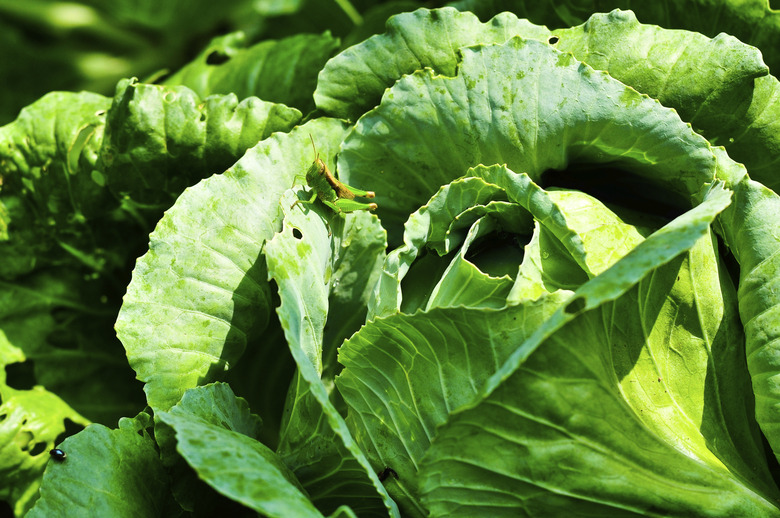Homemade Pest Control For Collard Greens
A staple of traditional Southern cuisine, collard greens (Brassica oleracea — acephala group) are favorites among gardeners in the American South. Like nearly all annual garden vegetables, succulent collards attract insects, including destructive pests such as flea beetles, aphids and collard loopers. If your collard greens are under insect attack, turn to all-natural solutions first. The ingredients to control and even eradicate harmful pests may be found right in your kitchen.
Handling Cutworms
Cutworms feed on every vegetable in your garden, especially young and tender plants. Begin by making your garden less hospitable to the cutworms. Clear away all dead leaves, grass and weeds that provide hiding places for cutworms. Then spread corn meal around your collards and other plants. Cutworms feast on corn meal — instead of your plants — but can't digest it. In a few days, the undigested meal kills the worms.
Wrangling Aphids
Aphids suck the sap from plants, causing the leaves to wither and die. Because the collard plant is mostly leaves, an infestation of aphids is especially troublesome. A strong blast of water from the hose will dislodge aphids and prevent an infestation if caught soon enough. If aphids do attack your collards, dissolve 1 ounce of soap flakes in 1 quart of water in a sprayer and mix well. Spray directly on the aphids. The soap must contact the insects to be effective. Repeat every seven to 10 days, as needed.
Battling Flea Beetles
Both adult flea beetles and beetles at the larvae stage eat holes through the leaves of collard greens. Deprive the beetles of a habitat by clearing all garden debris from around your plants. Then sprinkle wood ashes around each plant to repel the beetles. If the collards are already infested, puree 15 garlic cloves with 1 pint of water in a blender. Strain the mixture into a spray bottle, then spray the leaves thoroughly. Target the larvae, which are most susceptible to the spray. Repeat every few days as needed.
Corraling Collard Loopers
Collard or cabbage loopers look like green inchworms. As the name suggests, they are especially drawn to plants of the Brassica or cabbage family. Left unchallenged, loopers can destroy an entire crop. To combat collard loopers, handpick the offenders and drop them in a bucket of soapy water. You can also spray them with the garlic spray as you would for flea beetles. Whenever spraying any kind of pesticide, even these natural remedies, wear gloves, protective clothing and protective eyewear.
